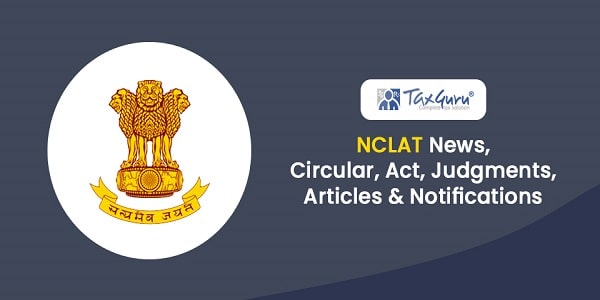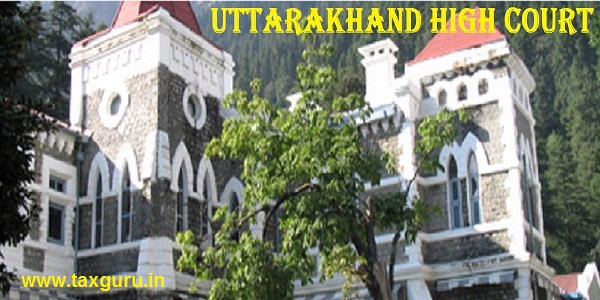Transactions specifically related to Sections 43 to 46 and Section 66 of the Insolvency and Bankruptcy Code, 2016 are being looked at by the forensic experts. These sections deal with identifying preferential and undervalued transactions, and those deliberately entered into to defraud creditors. These sections also deal with identifying undisclosed relationship(s) between the entities of the company.
Page Contents
1. Preferential transactions and relevant time [Section 43]
(1) Where the liquidator or the resolution professional, as the case may be, is of the opinion that the corporate debtor has at a relevant time given a preference in such transactions and in such manner as laid down in sub-section (2) to any persons as referred to in sub-section (4), he shall apply to the Adjudicating Authority (i.e. National Company Law Tribunal or NCLT in short) for avoidance of preferential transactions and for, one or more of the orders referred to in section 44.
(2) A corporate debtor shall be deemed to have given a preference, if−
(a) there is a transfer of property or an interest thereof of the corporate debtor for the benefit of a creditor or a surety or a guarantor for or on account of an antecedent financial debt or operational debt or other liabilities owed by the corporate debtor; and
(b) the transfer under clause (a) has the effect of putting such creditor or a surety or a guarantor in a beneficial position than it would have been in the event of a distribution of assets being made in accordance with section 53.
(3) For the purposes of sub-section (2), a preference shall not include the following transfers−
(a) Transfer made in the ordinary course of the business or financial affairs of the corporate debtor or the transferee;
(b) any transfer creating a security interest in property acquired by the corporate debtor to the extent that−
(i) such security interest secures new value and was given at the time of or after the signing of a security agreement that contains a description of such property as security interest, and was used by corporate debtor to acquire such property; and
(ii) Such transfer was registered with an information utility on or before thirty days after the corporate debtor receives possession of such property:
♠ Order in case of preferential transactions [Section 44]
(1) The Adjudicating Authority, may, on an application made by the resolution professional or liquidator under sub-section (1) of section 43, by an order :
(a) require any property transferred in connection with the giving of the preference to be vested in the corporate debtor;
(b) require any property to be so vested if it represents the application either of the proceeds of sale of property so transferred or of money so transferred;
(c) release or discharge (in whole or in part) of any security interest created by the corporate debtor;
(d) require any person to pay such sums in respect of benefits received by him from the corporate debtor, such sums to the liquidator or the resolution professional, as the Adjudicating Authority may direct;
(e) direct any guarantor, whose financial debts or operational debts owed to any person were released or discharged (in whole or in part) by the giving of the preference, to be under such new or revived financial debts or operational debts to that person as the Adjudicating Authority deems appropriate;
(f) direct for providing security or charge on any property for the discharge of any financial debt or operational debt under the order, and such security or charge to have the same priority as a security or charge released or discharged wholly or in part by the giving of the preference; and
(g) direct for providing the extent to which any person whose property is so vested in the corporate debtor, or on whom financial debts or operational debts are imposed by the order, are to be proved in the liquidation or the corporate insolvency resolution process for financial debts or operational debts which arose from, or were released or discharged wholly or in part by the giving of the preference.
♠ Way To Find Out Irregularities In Section 43
- Analysis of nature of related party transaction and their impact on the financial statement.
- Verification whether payments/ receipts have been done in accordance with the transaction.
- Impect of any offset journal entreis that may have been passed and its impact.
- Examination of transfer of property/assets/interest to the benefit of a particular creditor/ beneficiary in the presence of an existing debt/liability such that the creditor is in a beneficial postion at the time of distributors of asstes.
- Genuineness of the nature of funds/loan given/received from parties.
- Authentictiy of the claims made by related party creditors.
- Supporting the legal team in making application to the Adudication Authority.
2. Avoidance of undervalued transactions [Section 45]
(1) If the liquidator or the resolution professional, as the case may by, on an examination of the transactions of the corporate debtor referred to in sub−section (2) of section 43 determines that certain transactions were made during the relevant period under section 46, which were undervalued, he shall make an application to the Adjudicating Authority to declare such transactions as void and reverse the effect of such transaction in accordance with this Chapter.
(2) A transaction shall be considered undervalued where the corporate debtor−
(a) makes a gift to a person; or
(b) enters into a transaction with a person which involves the transfer of one or more assets by the corporate debtor for a consideration the value of which is significantly less than the value of the consideration provided by the corporate debtor, and such transaction has not taken place in the ordinary course of business of the corporate debtor.
2.1. Relevant period for avoidable transactions [Section 46]
(1) In an application for avoiding a transaction at undervalue, the liquidator or the resolution professional, as the case may be, shall demonstrate that−
(i) such transaction was made with any person within the period of one year preceding the insolvency commencement date; or
(ii) such transaction was made with a related party within the period of two years preceding the insolvency commencement date.
(2) The Adjudicating Authority may require an independent expert to assess evidence relating to the value of the transactions mentioned in this section.
3. Transactions defrauding creditors [Section 49]
(1) Where the corporate debtor has entered into an undervalued transaction as referred to in sub-section(2) of section 45 and the Adjudicating Authority is satisfied that such transaction was deliberately entered into by such corporate debtor−
(a) for keeping assets of the corporate debtor beyond the reach of any person who is entitled to make a claim against the corporate debtor; or
(b) in order to adversely affect the interests of such a person in relation to the claim, the Adjudicating Authority shall make an order−
(i) restoring the position as it existed before such transaction as if the transaction had not been entered into; and
(ii) protecting the interests of persons who are victims of such transactions
♠ Way To Find Out Irregularities In Section 45 And 49
- Evaluation of transaction that have occurred which are significantly less than the value of Consideration.
- Benchmarking such transaction carried out by the company with peer companies to comment on whether they were carried out at arm’s length.
- Review of transfer pricing orders.
- Quantification and nature of such transaction
- Supporting the legal team in making applications to the Adjudication Authority.
4. Extortionate credit transactions [Section 50]
(1) Where the corporate debtor has been a party to an extortionate credit transaction involving the receipt of financial or operational debt during the period within two years preceding the insolvency commencement date, the liquidator or the resolution professional as the case may be, may make an application for avoidance of such transaction to the Adjudicating Authority if the terms of such transaction required exorbitant payments to be made by the corporate debtor.
(2) The Board may specify the circumstances in which a transactions which shall be covered under sub- section (1)
♠ Way To Find Out Irregularities In Section 50
1) Ascertaining the nature of receipts of any financial or operational debt during the period within two years preceding the insolvency commencement date.
2) Terms & Conditions of such debt (interest rate, repayment terms, security interest etc) and determine if the same is exorbitant in nature.
3) Whether the parties who provided the loan are genuine parties or are in effect related parties.
5. Fraudulent trading or wrongful trading [Section 66]
(1) If during the corporate insolvency resolution process or a liquidation process, it is found that any business of the corporate debtor has been carried on with intent to defraud creditors of the corporate debtor or for any fraudulent purpose, the Adjudicating Authority may on the application of the resolution professional pass an order that any persons who were knowingly parties to the carrying on of the business in such manner shall be liable to make such contributions to the assets of the corporate debtor as it may deem fit.
(2) On an application made by a resolution professional during the corporate insolvency resolution process, the Adjudicating Authority may by an order direct that a director or partner of the corporate debtor, as the case may be, shall be liable to make such contribution to the assets of the corporate debtor as it may deem fit, if−
(a) before the insolvency commencement date, such director or partner knew or ought to have known that there was no reasonable prospect of avoiding the commencement of a corporate insolvency resolution process in respect of such corporate debtor; and
(b) Such director or partner did not exercise due diligence in minimising the potential loss to the creditors of the corporate debtor.
♠ Way To Find Out Irregularities In Section 66
1) Observation of any apparent fraudulent activity by analyzing the financial statements and other supporting documentation.
2) Identification of areas where fraudulent transaction may have occurred.
3) Analyzing additional data based on the findings.





























In one of housing projects where I am an authorized representative, the forensic report copy was not given. IBC is sweet on paper and has failed before crooks. As a senior CPA,and IP, I feel sad IPs struggle due to impractical rules which have given zero results. Quality of forensic reports are also matter of concern. Certifying by ICAI needs vast changes. Does it understand what it wants. Just issuing a certificate has failed to meet more professional needs. More publication of forensic reports by experts like criminal lawyers, police officials and experienced professionals from all streams is need of the hour. I want some serious minded CAs to criticize my views.